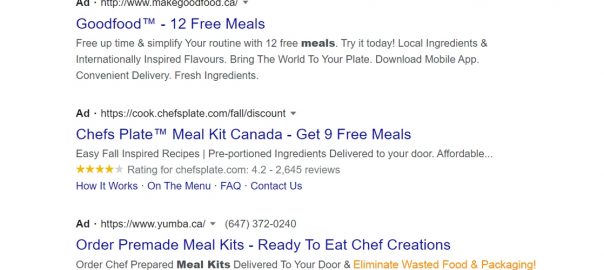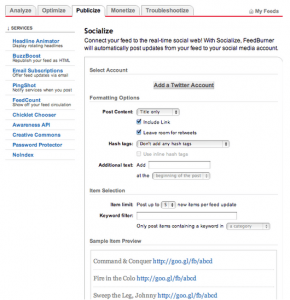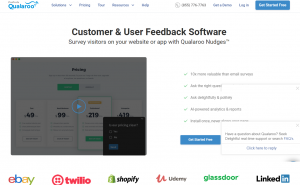Words make a difference. Copywriting can make a dilapidated garage sound like your future home, it can make George Costanza sound spongeworthy, and it can make online users click your digital ad in a sea of them.
That is—if you know how to write copy.
Our team recently attended the 2021 AdWorld Conference to learn the latest marketing hacks from Seth Godin and other marketing giants. My favourite seminars came from Joanna Wiebe of Copy Hackers and Alex Cattoni from the Copy Posse, who each shared the ingredients of their secret sauce—their proven strategies for copywriting that spark interest and generate clicks.
Here are some of my favourite takeaways:
1. While technology and media change, psychology stays the same
Ads have gone from catalogues to emails, and from flyers to Facebook. Our industry changes fast, but at the root of it all is consumer psychology and that doesn’t change overnight. When it comes to successful ad messaging, we should always keep in mind the “if this, then that” formula to create a clear association between your product and a valuable outcome.
For example, “Free up time & simplify your routine with 12 free meals. Try it today!” may invert the formula, but it still communicates that I can save time, save money, and get free food all by trying Goodfood meal kits. BRB while I go sign up.

In looking at other ads for meal kits, Goodfood is the only one offering anything for free. Everyone mentions delivery. Everyone mentions great recipes. But no one else grabs my attention with free food.
This brings us to the next tip…
2. Separate yourself from the pack by finding your niche
This is ultra-important for companies in saturated spaces. There’s a fridge-full of companies selling meal kits and every consumer is going to have to choose the one that’s right for them. One way you can stand out to consumers is by finding a market niche and calling it out in your messaging.

While Goodfood and Chefs Plate mention recipes and ingredients, Yumba is the only one calling out sustainability. As someone who hates throwing out food and breaking down boxes on garbage day, this scores points with me. Yumba takes it further on their website, using the headline, “Your meals make a world of difference” followed by a quick snippet about their mission to eliminate food waste.
I’ve known the names HelloFresh, Chefs Plate, and Goodfood for a while, but I’d never heard of Yumba. Despite this, if I’m left unsatisfied with Goodfood’s 12 free meals, Yumba would be next on my list because of its niche strategy.
3. “Should” is the new “Could”
As presented by Joanna Wiebe, there’s a big difference in how these two sentences land:
“You could be as famous as Kim Kardashian.”
“You should be as famous as Kim Kardashian.”
“Could” is a powerful word in marketing because it pushes the consumer to daydream about a world where they’re on top. “Should” turns the volume up by suggesting this daydream should be a reality already. You’re good-looking, you’re charismatic, you’re filthy rich, you should be as famous as Kim Kardashian but you’re not. What’s missing? Maybe it’s this course on how to master makeup? It’s even on sale!
The word “should” gasses up the consumer then frames your product or service as the missing ingredient. They’ve been shortchanged and only you and your offering can make things right in the world by giving them the outcome they should already have.
4. Show your audience they’re on their way with “already” and “still”
The customer journey is just that—a journey. Journeys take time. We’ve all asked, “How long until we’re there?” just to be told we’re not even halfway. It’s deflating. It’s exhausting. You may even question why you’ve embarked on the journey to begin with.
But then you hear, “We’re almost there!” and everything changes. You get excited. You’ve made it this far—what’re another few miles? What’s another couple of hours?
You can create this same energy with your copywriting by using words and phrases like “you already” and “still”. Together, these words signal progress and imply that the consumer is getting closer to their goal.
Consider a protein bar with the messaging, “You already work out, but you’re still skinny. That’s because you don’t get enough protein”. The word “already” implies steps have been taken—you’ve stuck to a workout routine—while “still” suggests a lack of progress. What’s missing? Protein bars.
5. Take an unexpected turn to separate your ad from your competitors’
Continuing with the last example, “That’s because you don’t get enough protein” is the expected conclusion. For a company selling protein bars, playing on the idea that you need protein to gain muscle is a good way to get lost in the shuffle. To stand out, follow up “already” and “still” with something unexpected.
“You already know you need protein to build muscle, but you’re still skinny. That’s because all other protein bars cause tapeworms.”
Maybe don’t go that far, but you get the point.
6. Erase doubt with “Even if”
This is the age of cynical consumers. You’ve been sold snake oil too many times to be fooled again. Everything is too good to be true because you don’t look like the people in the commercial. The last thing you bought didn’t work, so why would this one be any different?
Ad messaging isn’t a conversation. You have one shot to not only build interest but wash away all doubt. For example, “Smell like a summer night right before it starts raining” sounds good, but what if your diet consists of tapeworm-infested protein bars? Your copy should anticipate and diffuse any likely rebuttals. Luckily, you can do that with the words, “even if”.
Smell like a rainy summer night even if you worked a 14-hour shift.
Smell like a rainy summer night even if your stench has left countless dead bodies in your wake.
Consumers will look for reasons not to believe. Meet them where they’re at by dispelling these doubts with “even if”.
7. Fear is a motivator
Circling back to the top, as technology and platforms change, consumer psychology (for the most part) stays the same. People will still take action to avoid missing out, to avoid falling behind, and to avoid becoming part of the minority—unless the minority is successful. There’s a reason why millions of copywriters continue to use the phrase, “Millions of people use…”. It’s because 48% of millennials have spent money they didn’t have in order to keep up with friends. 60% of people make purchases because of FOMO, and 36% of people are afraid of feeling like an outsider. Use this to your advantage by communicating what the masses are doing.
Digital & Social Articles on Business 2 Community
(40)
Report Post







